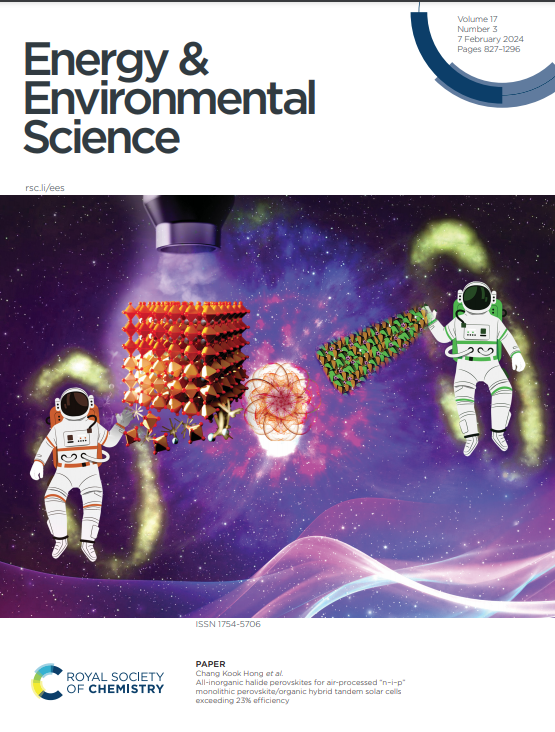Unraveling the Dynamic Transformation of Azobenzene-driven Redox Electrolytes for Zn-ion Hybrid Capacitors
IF 32.4
1区 材料科学
Q1 CHEMISTRY, MULTIDISCIPLINARY
引用次数: 0
Abstract
The incorporation of redox-active molecules into aqueous electrolytes addressed the challenges in the development of energy storage devices by enhancing energy density, expanding voltage windows, and improving cycling stability. Aqueous Zinc-ion hybrid capacitors (ZICs), which combine the characteristics of metal-ion batteries and supercapacitors, are emerging to meet high energy-power demands. Herein, we investigate the irreversible and reversible dynamics of azobenzene compounds in the development of redox electrolytes for ZIC applications. The results reveal that Sunset Yellow (SY) additives promote reversible Zn2+ stripping/plating at the Zn anode through ion-ligand coordination, while the redox behavior of the -N=N- group enhances the interfacial charge transfer. The passivation behavior of redox electrolytes, derived by SY molecules, was investigated using in-situ electrochemical atomic force microscopy. Morphology evolution, coupled with nanomechanical tests, shed light on the transformation of SY-containing electrolytes. The redox electrolytes improve the lifespan of Zn//Zn cells from 50 to 1700 cycles at 2 mA cm−2 and 1 mAh cm−2 by suppressing parasitic reactions and mitigating by-product formation. The redox-enhanced ZIC delivers an increased capacity of 113.3 mAh g−1 with improved cycling stability, compared to 75.2 mAh g−1 of ZnSO4 electrolytes without SY molecules at 0.6 mA g-1. A range of azobenzene-based compounds with varying structures were investigated to demonstrate the synergistic modulating effects. The results demonstrate the molecular engineering of redox electrolytes and provide fundamental insights into electrochemical interphase transformation.求助全文
约1分钟内获得全文
求助全文
来源期刊

Energy & Environmental Science
化学-工程:化工
CiteScore
50.50
自引率
2.20%
发文量
349
审稿时长
2.2 months
期刊介绍:
Energy & Environmental Science, a peer-reviewed scientific journal, publishes original research and review articles covering interdisciplinary topics in the (bio)chemical and (bio)physical sciences, as well as chemical engineering disciplines. Published monthly by the Royal Society of Chemistry (RSC), a not-for-profit publisher, Energy & Environmental Science is recognized as a leading journal. It boasts an impressive impact factor of 8.500 as of 2009, ranking 8th among 140 journals in the category "Chemistry, Multidisciplinary," second among 71 journals in "Energy & Fuels," second among 128 journals in "Engineering, Chemical," and first among 181 scientific journals in "Environmental Sciences."
Energy & Environmental Science publishes various types of articles, including Research Papers (original scientific work), Review Articles, Perspectives, and Minireviews (feature review-type articles of broad interest), Communications (original scientific work of an urgent nature), Opinions (personal, often speculative viewpoints or hypotheses on current topics), and Analysis Articles (in-depth examination of energy-related issues).
 求助内容:
求助内容: 应助结果提醒方式:
应助结果提醒方式:


